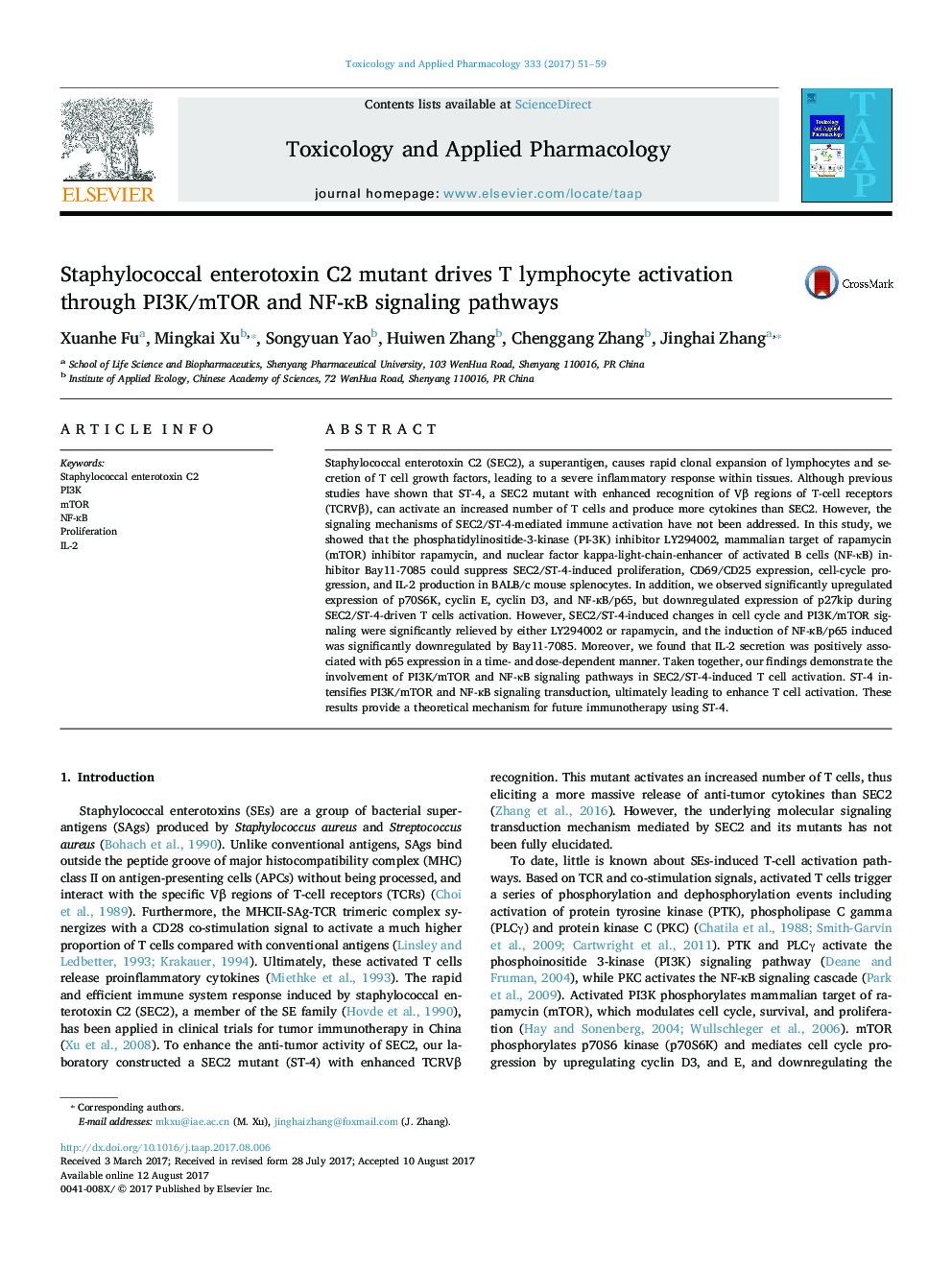| Article ID | Journal | Published Year | Pages | File Type |
|---|---|---|---|---|
| 5558229 | Toxicology and Applied Pharmacology | 2017 | 9 Pages |
â¢SEC2/ST-4 induces lymphocyte proliferation, CD69, CD25 expression, IL-2 secretion.â¢SEC2/ST-4 upregulates S6K, cyclin E/D3, p65 expression at mRNA and protein levels.â¢SEC2/ST-4 downregulates p27kip expression at mRNA and protein levels.â¢PI3K/mTOR and NF-ĸB inhibitors reverse molecules expression induced by SEC2/ST-4.â¢ST-4 exhibits higher efficiency than SEC2 in PI3K/mTOR and NF-ĸB pathways.
Staphylococcal enterotoxin C2 (SEC2), a superantigen, causes rapid clonal expansion of lymphocytes and secretion of T cell growth factors, leading to a severe inflammatory response within tissues. Although previous studies have shown that ST-4, a SEC2 mutant with enhanced recognition of Vβ regions of T-cell receptors (TCRVβ), can activate an increased number of T cells and produce more cytokines than SEC2. However, the signaling mechanisms of SEC2/ST-4-mediated immune activation have not been addressed. In this study, we showed that the phosphatidylinositide-3-kinase (PI-3K) inhibitor LY294002, mammalian target of rapamycin (mTOR) inhibitor rapamycin, and nuclear factor kappa-light-chain-enhancer of activated B cells (NF-κB) inhibitor Bay11-7085 could suppress SEC2/ST-4-induced proliferation, CD69/CD25 expression, cell-cycle progression, and IL-2 production in BALB/c mouse splenocytes. In addition, we observed significantly upregulated expression of p70S6K, cyclin E, cyclin D3, and NF-ĸB/p65, but downregulated expression of p27kip during SEC2/ST-4-driven T cells activation. However, SEC2/ST-4-induced changes in cell cycle and PI3K/mTOR signaling were significantly relieved by either LY294002 or rapamycin, and the induction of NF-ĸB/p65 induced was significantly downregulated by Bay11-7085. Moreover, we found that IL-2 secretion was positively associated with p65 expression in a time- and dose-dependent manner. Taken together, our findings demonstrate the involvement of PI3K/mTOR and NF-κB signaling pathways in SEC2/ST-4-induced T cell activation. ST-4 intensifies PI3K/mTOR and NF-ĸB signaling transduction, ultimately leading to enhance T cell activation. These results provide a theoretical mechanism for future immunotherapy using ST-4.
Graphical abstractSEC2/ST-4 drives T lymphocyte activation through PI3K/mTOR and NF-ĸB signaling pathwaysDownload high-res image (65KB)Download full-size image
